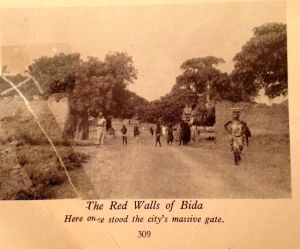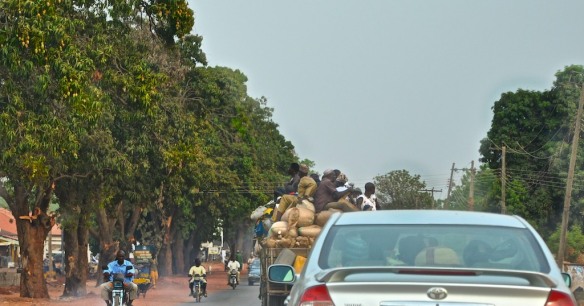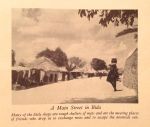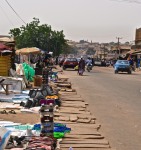In 1949, the year that I was born, Nigeria Magazine published an article,
“The Red Walls of Bida”.
Sixty-five years later, I find myself on the road to Bida.
Bida is located halfway between Lagos and Kano. The city is the capital of the kingdom of the Nupe, a Muslim people with a great past.
Since December 2014, I was in the process of arranging a trip to the central, northwest region of Nigeria with our Public Relations Officer, Alhaji Essa, who is a native of Bida. Our plans ended abruptly when Alhaji Essa suddenly died of a stroke on January 27, 2015. With great sadness but with more determination, I decided a trip to Bida was more of a necessity than one of curiosity.
Alhaji Essa had been with the company for nearly 25 years (read memorial). My request to visit his hometown pleased him and he had arranged a detailed program for my stay in Bida. But now, I would be delivering the Lababidi’s condolences to the family of Alhaji Isah.
From Lagos, I called the elder, Alhaji Galadima, who indeed confirmed that the family was waiting for my visit. Too, I had done my research. With a copy of the Nigeria Magazine article in my bag, I was keen to see if I might recognize changes from 65 years ago.
After a short flight to Abuja, I set out on a four-hour drive to Bida over roads with unrelenting pothole damage. The scenery is that of the Sahel, a semi-arid climate in the middle of the dry season. But one thing is clearly different from the article of 1949, no longer under colonial rule, Nigeria soon would hold its 5th quadrennial general election since the end of military rule in 1999.
Along the roadside and at regular intervals, candidates advertise for people’s attention. From Minna to Bida, the use of scarecrow-fashioned models surprise me. My first reaction is that these forms are derogatory toward the candidate, but soon I realize the message was quite the opposite.
In 1949, our author of ‘Red Walls of Bida’ (his name unrecorded except for the initials W. H. L.) drove from Lagos in what he called an ‘American Two-Toned Touring Sedan’. My car is not nearly so memorable—a 2010 Toyota. However, we (W.H.L., me and my driver, Yacubu) arrive into Bida over the same road,
“an avenue of mango trees which lined the road. Almost every branch bore large clusters of golden fruit, made more golden by the evening sun. No prettier sight could be imagined, and no triumphal arch more glorious than this long canopy of trees.” (Nigeria Magazine,#30, 1949)
Bida was once surrounded by a wall as were many cities in antiquity. (One city in Nigeria that the fortress walls and gate still stands is Kano). These walls were designed to withstand lengthy sieges. Open spaces within the walls were reserved for the production of crops. However, mud walls are not built to withstand the march of time and neglect. Today, only two short examples of the red walls of Bida remain. The open spaces are fill with a sea of cement houses and corrugated metal roofs that intermingle with mud-brick dwellings.
Continue Reading about Red Walls of Bida, here.
Read about Bida Glass – Bangles and Beads 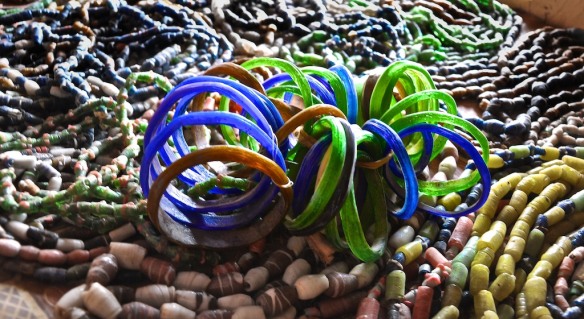 Read about Bida Brasswork, here
Read about Bida Brasswork, here Read about Bida Blacksmith here
Read about Bida Blacksmith here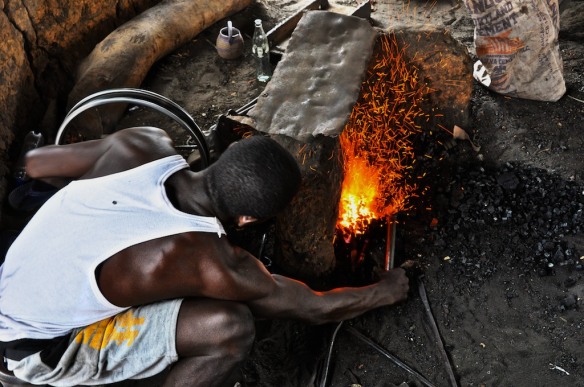 For history of Nupe Kingdom, click here
For history of Nupe Kingdom, click here
***Nigeria is often in the news — often the news is not good, however this article centers the spotlight on Nigerians, the culture and their good work to keep traditional crafts alive. Throughout the developing world, heritage crafts need support, if not, the ancient techniques will vanish only to be read about in a dusty old book. Please support heritage crafts wherever and whenever possible. By doing so you help preserve ancient techniques, encourage skills and apprenticeships, and support the local economy.***
_____________________________________
All rights reserved by Lesley Lababidi. To copy or re-produce photography and/or writings, written permission from Lesley Lababidi is required. Excerpts and photography from Nigeria Magazine, ed. E.H. Duckworth, Government of Nigeria #30, 1949.
All Photographs and text are under international copyright laws. No re-use without the written permission of Lesley Lababidi 2023.


